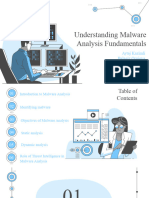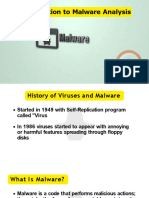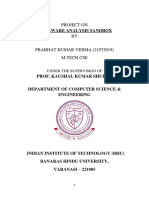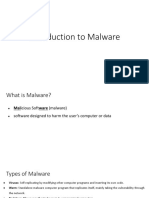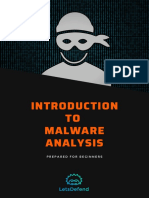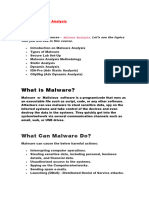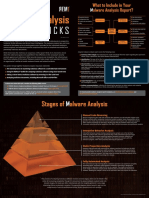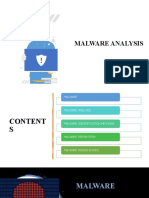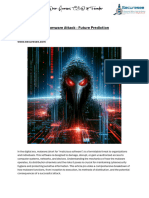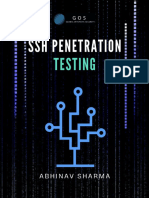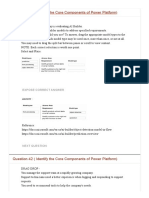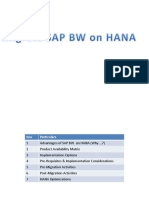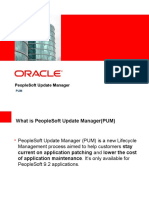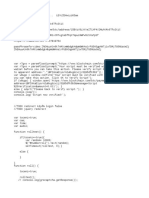0% found this document useful (0 votes)
145 views11 pagesMalware Analysis Guide
Malware analysis involves understanding malware through static and dynamic analysis techniques. Static analysis examines malware code without execution, while dynamic analysis observes malware behavior when executed in a controlled environment like virtual machines. Malware spreads through various means such as email attachments, drive-by downloads, and infected websites. Tools used for analysis include disassemblers, debuggers, sandboxes, and malware analysis frameworks. Challenges include constantly evolving malware techniques that aim to evade analysis.
Uploaded by
Adu SinghCopyright
© © All Rights Reserved
We take content rights seriously. If you suspect this is your content, claim it here.
Available Formats
Download as PDF, TXT or read online on Scribd
0% found this document useful (0 votes)
145 views11 pagesMalware Analysis Guide
Malware analysis involves understanding malware through static and dynamic analysis techniques. Static analysis examines malware code without execution, while dynamic analysis observes malware behavior when executed in a controlled environment like virtual machines. Malware spreads through various means such as email attachments, drive-by downloads, and infected websites. Tools used for analysis include disassemblers, debuggers, sandboxes, and malware analysis frameworks. Challenges include constantly evolving malware techniques that aim to evade analysis.
Uploaded by
Adu SinghCopyright
© © All Rights Reserved
We take content rights seriously. If you suspect this is your content, claim it here.
Available Formats
Download as PDF, TXT or read online on Scribd
/ 11



